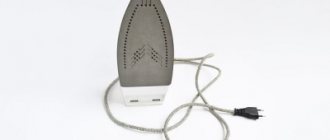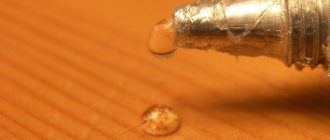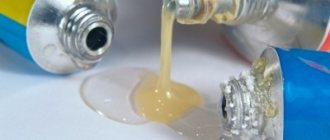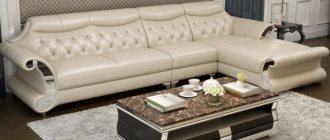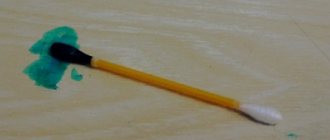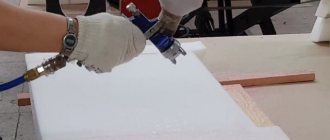Manufacturers are required to stick labels on their products so that potential buyers can familiarize themselves with information that may concern them. However, in most cases, labels are also perceived as an ugly sticker that spoils the appearance of the product. Therefore, many new product owners try to remove it as soon as possible. And then the question arises before them: how to remove the glue from the sticker from the plastic.
- How to remove glue from a sticker
- Special products for removing glue from stickers
- We show marks on clothes
- Removing stains from furniture
- From glass and ceramics
- Cleaning plastic
- Other surfaces
- Traditional methods for removing traces of stickers and tape
- Heat treatment with a hairdryer
- Using alcohol or acetone
- Distilled vinegar
- Masking tape
- Using sunflower oil
- Eraser
- Wet wipes
- Microfiber sponge
- Refined gasoline
- Lemon or citric acid
- Take precautions
- Finally
It is not always possible to defeat sticker glue using standard methods. The label itself is quite difficult to peel off so carefully that the adhesive substance does not remain on the surface of the product. If you don’t get rid of the glue right away, dirt will soon stick to it, which will be much more difficult to remove.
In this article we will look at the pressing question of how to remove sticker adhesive from different surfaces. Let's look at the most popular methods for removing label residues, traces of tape and other labels.
What types of stickers are there?
It is not difficult to remove a sticker from clothing if you know its “origin”. How to distinguish one type of sticker from another? In some cases, a label will help, which will reflect this information, but most often you have to figure it out yourself. So how do you figure out what the design is on your T-shirt or cap?
- Iron-on adhesive. If the relief of the fabric is not visible, and the color scheme of the design is rich in halftones, tints and transitions, you are dealing with a thermal sticker. They are dense and cannot be ironed.
- Thermal printing design. Thermal printing and designs, as well as vinyl images, are not very dense. It will not be difficult to examine the texture of the fabric through such an image.
- Image on fabric.
- Vinyl based applique. Vinyl-based stickers are most often two-color, not too thick. If you look closely, you may notice that the relief of the material is visible through the image.
How to choose the right product for different surfaces
Now, knowing the entire arsenal of products, you need to find out which of them are suitable and which are not recommended for use on different types of surfaces.
For dishes
The easiest way to remove labels from dishes and similar small items is:
- if the label indicates that the product can be washed in a dishwasher, and you have one, put your purchase or an empty jar in there and don’t worry about anything: hot water in combination with detergents will do everything for you;
- The second way is to heat the label by placing it under a stream of very hot water or placing it in boiling water. Under the influence of temperature, the glue will soften and it will be easier to remove;
- if hot water does not help, take one of the remedies described above. Anything will do and can be washed off easily.
Never use chemical solvents on cookware.
Any food solvents can be used on dishes
Video: test of five folk remedies on a glass bottle
For plastic
The safest and most effective products for plastic are soap solution, wet wipes, and oil. It is difficult to define strict “impossible” terms, because plastic can be completely different in texture and composition. Always test in an inconspicuous place how the material and paints behave. Use alcohol, vinegar, abrasives and high temperatures with caution. If you decide to use a hairdryer, choose a medium setting, as some types of plastic may become deformed due to strong heat.
For metal surfaces
Metal surfaces are the strongest. You can choose any of the described products, because they are not afraid of food acids, industrial solvents and high temperatures.
For glass
On glass, if it is not dishes, but windows, shelves, furnishings, etc., you can use vinegar, any nail polish remover, alcohol, and even acetone. Special cleaning products for washing glass and mirror surfaces, for example, “Mr. Muscle for Glass,” are also suitable.
First, try removing the sticky residue from the glass with glass cleaner.
For furniture and wood products
More often, furniture is made from wood or laminated boards based on wood chips. Always take into account the type of coating: a varnished surface requires the most delicate treatment - with special products like LabelOff, oil or a warm hairdryer, but laminated chipboard and MDF will withstand both mild solvents and a melamine sponge.
You must be prepared for the fact that these products will leave marks on the furniture. Therefore, after removing the glue, you will need to wipe and polish the entire surface. Alcohol, vinegar, and nail polish remover, if used at all, should be used with great caution. They can damage the varnish.
For untreated wood, the ideal method is a hair dryer. If he fails, alcohol or vinegar, nail polish remover, and wet wipes are acceptable. Do not use oil, it will saturate the wood and leave a dark stain. You will have to process the entire product later.
Stickers and labels on cabinets are best removed with a hairdryer
From my own experience, I can assure you that a hair dryer for furniture and household appliances is an almost universal tool. In addition to the usual labels on purchased goods, you have to constantly deal with children's stickers. I am not a supporter of strict discipline and ideal order. Therefore, I allow my child to enjoy all kinds of stickers to his heart’s content. And with great delight she turned the house into a kingdom of stickers. They are everywhere: in the kitchen on all appliances, on cabinets, switches, windows and mirrors. It doesn't bother us as long as they are new and beautiful. But over time, the pictures begin to fade, peel off, and then, of course, they have to be destroyed. Where the hairdryer did not finish the job, I wipe off the marks with alcohol or nail polish remover. This always takes a few minutes, although some cartoon stickers have a base that is in no way inferior to the factory labels. The main thing when cleaning furniture is to immediately wipe it well with a damp cloth and polish it dry, otherwise stains will remain visible in the light.
Video: Using a hairdryer to remove stickers from a chest of drawers
For clothes
Two different situations may arise here: you need to remove a sticker that was previously applied on purpose, or you need to remove the mark from the labels. To get rid of annoying drawings or inscriptions, you will need a hair dryer or iron. They use a hairdryer as in all previous cases: heat it up, peel it off, and so on until the end.
The thermal adhesive is heated with a hairdryer and gradually peeled off from the clothing.
The iron works as follows:
- Turn it inside out and place paper under the sticker.
- Using a heated iron, iron the sticker area until it all comes off onto the paper.
To remove the sticker you will need a hot iron and paper
If you remove the label and there is a sticky residue left in its place, use regular stain removers or laundry soap before washing. You can try to remove it with acetone using rubbing movements, without pressing too hard so as not to stretch the item.
Important! Before use, test in an inconspicuous corner to see how the fabric and paint react to the solvent.
This year I bought my daughter a summer tunic. Even in the store I noticed small gray spots on it - dust had stuck to something. The seller explained that there was a protective film glued there on an inverted pattern of sequins. She assured that it was enough to just wash it. That’s what I did, and the tunic was indeed absolutely clean after washing. There was no trace left of the stains. But as soon as my daughter put it on a couple of times, the adhesive substance appeared again: I again saw the same spots with adhering dust. I’m always afraid to take risks with acetone and similar substances, especially on children’s colored clothes. Amway stain remover spray helped me. But I think other high-quality stain removers will also cope with the problem.
Video: ways to remove iron-on adhesive from a T-shirt
For cardboard and paper
Sometimes sellers stick price tags directly on books and magazines. It happens that when we buy a gift, we only discover at home that the price is printed on a bright green or orange piece of paper on the box. In such cases, heating with a hairdryer is the best solution. You can remove the glue from glossy covers with nail polish remover without acetone or alcohol.
How to remove iron-on adhesive from clothing
If you are determined to get rid of decorations on your clothes, purchase a special product that will solve the problem in a matter of minutes. For those who do not have this opportunity, there are several options for removing thermal stickers at home using improvised means.
- Dryer. Place the item in the unit and set the temperature to high. When exposed to heat, the adhesive base of the decoration will become more pliable. And you can remove the thermal sticker without much effort.
- Warming up with an iron. Lay out the clothes on a flat surface, place sheets of paper under the image (both the front and back sides). Iron the image with an iron set to the highest heat setting until the decal transfers to the paper.
- Hair dryer or freezer. Not all items can be exposed to high temperatures, and for such cases, use a hairdryer to heat the base of the sticker, or place the item in the freezer for 2–3 hours. In both cases, the surface of the design will begin to crumble and peel off and you will be able to “scrape” it off the surface of the fabric.
The same methods will help remove a drawing or inscription applied with thermal printing from things.
Necessary Preface
There are several conditions that, if met, will allow you to quickly and effectively remove glue stains.
- Don't delay cleaning. If you remove a sticker that leaves a sticky mark, remove it immediately. Otherwise, the remaining glue will attract dirt, dust, and hairs, and if the sticker was on an enamel pan, then after the first use the fire will “impress” the dirt into the base, and it will be much more difficult to wash the sticker off such dishes.
- Meanwhile, moderate heat is a good assistant in cleaning. You can use a hair dryer. The softened adhesive trace can be easily wiped off with a napkin.
- When choosing a chemical, first check its effect on an inconspicuous area, and only then treat the entire desired surface.
How to remove a vinyl sticker
You can remove vinyl stickers in the same way as thermal stickers - using heat.
The only difference is that after removing the sticker, you need to wipe the area where the removed pattern was located with vinegar. This will help clean the fabric from any glue residue.
In addition, you can remove vinyl and other types of stickers using stationery tape. You need to press the adhesive tape firmly onto the image for 2-3 minutes and then quickly remove it. To remove the drawing completely, you will have to repeat the manipulations several times.
Before using tape, make sure that the material from which your item is made does not have an increased tendency to stretch and deform.
Removing sticky marks with steam
One of the simplest ways to remove a sticky sticker. Hot damp air softens the glue, becomes more sticky, and is easier to remove. If you have a clothes steamer or an iron with this function, you can use them. If not, there is an old reliable method - a steam bath.
- Pour water into a saucepan or metal container. Bring to a boil, hold the area to be cleaned over water vapor.
- Try removing any remaining glue with a wooden stick, your hands, or a rag (depending on the degree of contamination).
- If necessary, hold the item over the steam again.
How to remove rhinestones from clothes
- Often the designs on the fabric are decorated with rhinestones and sparkles. How to remove them from fabric? If you need to remove hardware, use a mild knife or metal nail file.
- Using one of these tools, carefully “remove” rhinestones and sparkles from the surface. Do not pull the fabric, act delicately so as not to damage the fibers of the fabric.
- When the decorations are removed, traces of glue will likely remain. You can remove them using one of the methods described below.
What not to do
When cleaning various surfaces from glue, you must not:
- use abrasives and hard brushes to clean the glass surface, heat the remaining glue with a hairdryer - hot air may cause dark spots to appear on the mirror;
- remove dirt using metal objects - they scratch the surface;
- use a melamine sponge to clean dishes - melamine contains toxic substances.
Do not use aggressive chemicals or strong solvents to avoid damaging the surface and harming your health. It is better to use safer methods.
Silkscreen printing
If the clothing has a convex and dense print, it means it was made using silk-screen printing. The question of how to remove a design from a T-shirt of this format is very relevant, since this is quite difficult to do.
You can buy a spray to remove paint, apply it to the ornament and wash the item after 15 minutes. Even this method does not provide a guarantee, so it is better to make a patch or print over the design if you are tired of the previous image or have become damaged.
We scrub the plastic with our own hands (step by step)
Plastic products have different properties. The disadvantage of most plastics is their low heat resistance and sensitivity to aggressive substances.
We must take this into account.
- Prepare a paste-like mixture from water, soda and drops of any washing gel. Apply to the surface, leave for a while and rub again.
- Point the hairdryer at the piece of paper and, turning on the minimum power, tear it off.
- Wipe off the sticky mass with solvent, kerosene, alcohol, vinegar.
If you plan to use chemicals, test them on an invisible part first.
If you plan to use aggressive substances for cleaning, a test treatment of an inconspicuous fragment must be carried out.
Batik
Batik is painting clothes with acrylic paints. Such a pattern can be drawn only in the first minutes after application. Batik does not come off the fabric. If the thing is damaged or tired of you, then it is better to say goodbye to it.
There are no hopeless situations; there are many ways to update clothes. Choose the step-by-step method you like, experiment and enjoy things that can serve you for some time. If any method is not clear, use the help in photo and video format.
Methods for removing stickers from glass surfaces
Glassware, car glass, window glass or mirror glass look attractive only if it is absolutely clean and transparent. Unfortunately, manufacturers often attach various stickers to the glass indicating the brand or price. And it’s not easy to remove such a sticker, and it’s even more difficult to wipe off dried glue residue without damaging the glass.
There are proven methods that allow you to remove both the sticker and the adhesive with a minimum of effort. They can be divided into 2 categories:
- homemade - stickers and dried glue can be easily removed with products found in every kitchen and pantry;
- specialized - on the market you can find chemicals designed specifically for removing stickers and glue from glass.
We recommend reading: How to remove brilliant green from linoleum
Which method to choose depends on financial capabilities, time available and the complexity of the contamination. In addition, you need to choose products taking into account the purpose of the glass object, for example, cups, plates or other utensils are not recommended to be treated with the same chemicals as window or car glass.
How to remove glue from a sticker
If the manufacturer of the product has attached a label or price tag with weak glue, then it can be soaked with water. A wet rag is placed on the label for 15-20 minutes, and then the soaked sticker is removed mechanically. If you cannot remove it this way, you need to choose a cleaning method depending on the surface material.
From plastic
The safest way to remove sticker adhesive from plastic without damaging it is to use a specially prepared paste of baking soda, a small amount of water and a few drops of detergent. The paste should be thick, so you need to add a little water. The resulting mixture lubricates traces of glue, and after a while the paste is applied again. After two attempts, the remaining paste and glue are washed off with warm water.
The sticker on plastic can be removed using other methods.
- Alcohol. Wet the contaminated base with alcohol or another alcohol-containing composition, and after a while wipe with a damp cloth.
- Hairdryer. A stream of hot air is directed at the contamination and then removed from the surface.
- Table vinegar. A sponge is soaked in it and the surface is well soaked with it. After softening, the label is removed with a flat, blunt object.
- Kerosene, solvents or acetone. The composition is applied to the stained plastic for just a few minutes so as not to damage it, and then washed off with warm water.
Aggressive media and flammable mixtures are applied for a short time and very carefully, as they can damage the surface of the material and cause its deformation.
From glass
The easiest way to clean glass surfaces is by heating. Under the influence of temperatures, the adhesive composition softens and is easy to wash off. To heat, use a regular women's hair dryer or boiling water, which is poured over the contaminated area.
- You can wash off the glue from the sticker from the glass with baking soda mixed with dishwashing liquid and warm water. A degreaser works in a similar way.
- Vegetable oil, which is used to soak dirty glass. Likewise, vinegar essence softens glue residues. When the label is completely saturated with the composition, it can be pryed with a sharp object and unhooked.
- Products and cleaners for bitumen stains. The only drawback is the unpleasant smell of these mixtures. You can buy them at any construction stores.
From clothes
- Wash the item. Weak adhesive will wash off during the first wash.
- If washing doesn't help, try removing the residue with wide tape. It is glued to the label and pulled back sharply. This method is used only on clothes made of durable materials; soft and worn fabrics can be damaged.
- You can soak the glue-contaminated area with boiling water. When exposed to hot water, the sticker can peel off and come off without additional friction.
- Use an iron with a steam function. The clothes are laid out on the table, a towel is spread over the area to be treated and steam treatment is carried out. The increased temperature of the steam has a delaminating effect on the glue under the label, and it comes off.
- The item can be put in the freezer. The glue freezes and breaks down under the influence of low temperatures.
- The area is thickly lubricated with vegetable oil, it softens the glue, and the label is easily removed. If an oil stain remains on clothing, it should be removed immediately with dishwashing liquid. If necessary, the procedure must be repeated.
- Clothes made from durable fabrics can be cleaned with acetic acid, alcohol or vodka.
If you cannot deal with the contamination yourself at home, it is better to have your clothes cleaned so as not to damage them through your actions.
From furniture
Stickers and labels are applied to the furniture to prevent counterfeiting of original products.
- If the sticker was applied recently, you can pry it off with a knife and peel it off. You can first moisten it generously with soapy water, then the glue will move away from the surface of the furniture faster.
- Old labels are more difficult to remove. They need to be heated with a hairdryer for several minutes. When the glue softens, it can be easily wiped off with a napkin.
- In more severe cases, aggressive environments, alcohol, flammable compounds, etc. are used.
- You can remove labels from polished furniture with vegetable oil.
This method should not be used to wipe off stickers from an untreated board, as greasy stains may remain on it.
- You can try to remove it with wide tape, which sticks to the sticker and is quickly torn off.
If the owner of new furniture has iron patience, he can try to wipe off the sticky layer with a paper eraser.
From metal
Labels can be washed off metal surfaces using any of the methods listed above. First try the soap solution, then the vegetable oil. If they don't help, try more aggressive agents, such as alcohol or solvent. Any of the methods is suitable for metal processing, since it is a deformation-resistant material.
From a car
Vehicles can be equipped with manufacturer stickers, parking passes, advertising stickers and tuning stickers. The method for removing them from the car will depend on where the sticker is placed: on the metal body of the car or on its glass. If on the body, then methods for removing stickers from metal are applicable. You can try a soap solution on the glass, and then gradually move on to solvents and auto chemicals if other methods fail.
How to remove stickers from dishes and porcelain
Removing the adhesive layer from dishes is quite difficult. At home you will need available materials.
Various options are used for this:
- Cologne. The alcohol solvent is applied using gauze or a cloth. Leave for 20 minutes. When the adhesive base gets wet, it is removed with dishwashing detergent. If there is no cologne in the house, use vodka.
- Vegetable oil. The dishes are soaked in water for several minutes, the sticky part is greased. Leave for one hour. Residues are removed with a washcloth and washed under water. The oil is washed off with cleaning powder or detergent.
- Vinegar. The dishes are soaked in vinegar and removed for one hour. Afterwards, the sticker is removed with a scraper, and the porcelain or glass is thoroughly washed.
You can remove glue from glass with a steel wool or knife. Don't be afraid to damage the surface. The dishes are “not afraid” of mechanical and chemical influence.
How to remove stickers from books
The following will help you remove labels from printed publications:
- Scotch. After removing the sticker, any remaining adhesive can be carefully removed using adhesive tape.
- Iron. The book is covered with a thick cloth and ironed. Under the influence of temperature, the label can be easily removed from the paper.
- Solvent. Use nail polish remover, but without acetone. The glue stain is wiped off with solvent. This method is suitable for glossy covers.
If these methods do not help, buy a specialized stationery solution for paper. It will easily remove the adhesive surface.
Take precautions
Even with something as simple as wiping glue off a label, precautions must be taken. So, if you decide to work with alcohol or gasoline solutions, it is recommended that you carry out all work wearing protective gloves, otherwise there is a risk of damaging your hands.
It is also important to directly correlate the materials used for cleaning and the performance characteristics of the surface being cleaned. So, if it does not cope well with the ingress of aggressive chemical components, it is recommended to look at softer and harmless methods.
Finally
Labels have become so firmly established in everyday life that it is difficult to imagine the sales market without them. They are presented on a wide variety of household items, food products, etc.
Wipe off remaining glue after stickers is not such a difficult task as it might seem at first glance. In this article, we have presented many useful and effective ways to deal with such a problem. It is not at all necessary to try to pry it off with your nails, breaking them and “killing” your hands. Each home probably has all the necessary equipment to solve such problems.
Before starting work, we recommend watching the video instructions on how to remove glue from stickers from different surfaces:
Tools used
The adhesive base can be removed manually using detergent.
If this does not help, then use:
- oil: sunflower, corn, olive;
- alcohol;
- vinegar;
- scotch;
- acetone;
- household hair dryer;
- citrus.
Oil
The method is suitable for surfaces that do not absorb fats.
Sequence of procedure:
- The label is soaked in oil and left for 10 minutes.
- Soaked paper is removed with a knife or plastic scraper.
- The product is washed with soap and water, and the remaining glue is removed.
If the house runs out of oil, you can take 20-40 g of mayonnaise.
Alcohol
Use pure homemade alcohol tincture, store-bought vodka, and deodorants.
Procedure:
- A cloth napkin is soaked in the composition.
- Wipe off the adhesive base.
- Rinse thoroughly with hot water.
This method is not suitable for all materials; you should first check it on an inconspicuous fragment.
Vinegar
Suitable for most surfaces, it does not contain “aggressive” chemicals.
Algorithm of actions:
- Apply table vinegar to a cloth.
- Wait 7-10 minutes: the paper will become limp during this time.
- Carefully remove the top layer.
- The glue is wiped with a wet cloth.
If the procedure does not help, repeat several times until the adhesive stain completely disappears.
Scotch
This method will help when the sticker is “fresh” and can be easily removed. Tape is glued to the top and torn off with a sharp movement.
The procedure is carried out several times, rinsing the remaining adhesive base with water.
Baking soda
You need to take a small amount of baking soda and water. Mix the ingredients until a homogeneous paste forms. After this, apply to the contaminated area and rub.
If the stain does not come off, apply a paste of baking soda to the desired area and leave for a few minutes. Then repeat the procedure again.
After removing the stain, the surface must be wiped with a mild soap solution to remove any remaining soda.
Lemon acid
Dissolve a couple of tablespoons of citric acid powder in 100 ml of water. Moisten a soft cloth with the resulting solution and rub the contaminated area.
If the glue does not disappear, then apply the dampened cloth to the stain for a few minutes. After this, rub the stain again and rinse off the acid with clean water.
Lemon
Cut a small lemon into two parts. Rub one of the parts well onto the stain with glue. Lemon juice, when it gets on the glue, breaks it down.
If the glue from the sticker has already dried and ingrained into the plastic, then you can simply leave the lemon on the contaminated area for a few minutes. Then wipe the area with a damp cloth.
If the stain remains, repeat the procedure several times.
Dishwashing liquid
Apply any dishwashing liquid liberally to the area contaminated with glue. After which you need to leave the product for 5-10 minutes, then rub the stain with light circular movements.
Due to the abundant foam, it is necessary to thoroughly wash the contaminated area. Otherwise, soapy streaks will remain.
Vegetable oil
Any vegetable oil can easily remove glue residues on a plastic surface. To do this, it is necessary to evenly apply refined vegetable oil to the adhesive composition. Leave the stain for 10-20 minutes.
After this, armed with a scraper, you need to remove that part of the glue that did not come off on its own. In this case, it is necessary to remove the adhesive layer very carefully so as not to scratch the plastic.
After the entire procedure, thoroughly wash the surface with soapy water.
Construction hair dryer
A hair dryer also copes well with the problem.
You need to use this device to heat the surface with glue, then carefully remove the softened glue from the surface.
It is worth noting that a hair dryer heats up very quickly, so it is important not to overheat the surface. Hot temperatures can cause plastic to become deformed.
After carrying out this procedure, it is necessary to wipe the surface with a weak soap solution.
Stationery eraser
Before using the eraser, the adhesive trace must be moistened with water and left for 15 minutes to soften.
After this, they begin to rub the stain from the sticker with an eraser. It is better to remove the resulting pellets from the surface with a damp sponge.
This method allows you to remove adhesive marks without damaging the surface.
Melamine sponge
We enhance the effect with a melamine eraser sponge. The accessory is used to clean surfaces from stains of various origins. It will help in our case too.
We wet the contaminated area with water and apply the sponge to the stain until it disappears completely.
Mayonnaise
In this product, vegetable oil takes up up to 70 percent. So mayonnaise is quite suitable for removing glue. We proceed in a similar way.
Wet wipes
This method will help with minor contamination. You can rub a stubborn stain until it disappears, but you will have to spend a lot of time and effort.
Laundry soap
Laundry soap is a budget-friendly product that allows you to remove old, cracked patterns from the surface of a T-shirt. You will need:
- heat the water;
- soak the desired item in it;
- soap the print with laundry soap;
- rinse with warm water.
The image is rarely washed off the first time and, in most cases, the procedure will have to be repeated again.
Peanut butter
This product is excellent at destroying adhesives. Therefore, it is even used on clothes. Peanut oil is applied in a thin layer and literally after a minute the glue can be removed. At the end of the procedure, rub the oily stain with laundry soap and leave for 15 minutes, then wash the item. If the grease remains, you will have to repeat the treatment with a professional laundry stain remover.
How to remove a sticker from clothes with an iron
We continue to discover the unusual capabilities of ordinary household appliances. If using an iron, first look at what the applique is made of.
If the design is glued to clothing with a sticky layer, but cannot melt itself, cover the sticker with a damp piece of fabric and then press it with a heated iron. This way the glue heats up very quickly. Remove the fabric from the clothing and quickly, while it is still hot, scrape off the sticker with a knife or similar object.
The downside to this method is that the glue may remain on the fabric. It can be dealt with either with a special tool or in a way that you will read about later.
Also be aware that the glue may leak through the fabric. To prevent this, proceed as you would with a hair dryer.
If there is an image on your clothing that can be melted with an iron, then place a piece of parchment (baking paper) on it, then a damp cloth, and only then heat it with an iron.
Cold
You can get rid of thermal stickers using the freezer. Cold promotes glue transformation. Due to exposure to low temperatures, the glue gradually dries out and begins to bond the pattern with the material worse.
In order to remove the thermal sticker, just set the freezer to the lowest temperature. Then you should put the item in the middle for at least 30 minutes.
After the glue has dried, you should carefully remove the drawing.
Boiling water
For removing stickers, a suitable option is to apply high temperature to the adhesive base of the sticker.
An example of such an application is boiling water. In order for the adhesive base of the former sticker to soften, very hot water is poured onto it. This makes the adhesive layer viscous and pliable. In this state it will be easy to clean.
Using high temperature is only possible with heat-resistant plastic.
Combustible mixtures
Kerosene, refined gasoline or lighter fluid will remove all known types of adhesive papers and films from glass or similar surfaces.
- Wet a cloth or napkin with gasoline.
- Apply a thin layer of adhesive contamination.
- Wait 2 minutes, then wipe with the same cloth until the stain disappears completely.
- Afterwards, you can wash it off with warm soapy water to remove the smell, if any.
The solvent properties of the above mixtures make their use undesirable on a number of surfaces, for example, products painted with alkyd varnishes or paints and some types of plastic.
Removing Labels from Metal
To remove traces of glue from metal, you can use:
- acetone or nail polish remover;
- ammonia;
- gasoline for refilling lighters;
- kerosene;
- white spirit;
- turpentine;
- automotive degreaser.
But you should be careful if the item is painted - all these products can erase the paint, so with a cotton swab, apply a small amount of the product available to you on the area that is not visible and wait 5-10 minutes. If the paint is not damaged, begin cleaning the surface with confidence. All of the above will not leave scratches on the metal surface, the smell will disappear over time, and to avoid greasy stains, the contaminated area should simply be wiped with dishwashing liquid and then with a damp cloth.
Special means
If traditional methods do not help to cope with the print, you should use special liquids from the category of household chemicals. Their formula is developed taking into account the chemical composition of the glue and the base of fabric stickers.
When choosing a product, you need to pay attention to what fabrics and types of stickers it is intended for. Important criteria are also the complexity of using the liquid, its toxicity and cost.
The most popular brands include:
Goo Gone
The liquid allows you to remove residues:
- glue,
- resins,
- sticky tape,
- grease stains.
The advantage of the product is its composition, which is based on citrus oils. The downside is the greasy residue, which must be removed by washing. According to the cleaning technology, the item is first soaked in a solution of any detergent. Goo Gone is then applied to the print area.
After a few minutes, roll up the sticker with a cotton pad. After this, the item is washed with an increased dose of washing powder. The price of one 50 ml bottle is on average 350 rubles.
Thermoyed
Spray cleaner is designed to remove thermal adhesives. The product wins due to ease of application, but loses due to its high price.
To clean, the solution is sprayed onto the sticker area on both sides of the material. Leave for 1 minute and then clean off the remaining pattern with a napkin. The average cost of a 520 ml bottle is 1800 rubles.
HG sticker remover
A universal product. It is designed to remove stickers, adhesive marks, tape, oil and tar stains. The advantage of this solution is the absence of chlorine. Disadvantages include an unpleasant odor.
To remove traces, liquid is applied to the drawing, left for 3-4 minutes, and then the softened paint is cleaned off with a napkin. If the effect is not achieved the first time, the treatment is repeated.
The price of a 300 ml bottle is on average 300 rubles.
What not to do
Labels and adhesive residues should not be removed with a knife: its sharp blade may damage or scratch the surface. It is better to avoid abrasive products with coarse particles. After using them, scratches often remain.
You can heat the glue on glass and mirrors under one condition: the hair dryer should blow warm, but not hot air. If heated unevenly, the surface may burst.
Do not use solvents on painted surfaces. Acetone and kerosene can ruin plastic and leave stains on colored clothing. It is not recommended to remove glue from paper using liquid products. Oil should not be applied to solid wood as it will be absorbed and leave behind stains.
How not to spoil your purchase by removing labels: general recommendations
Important points you need to know to protect yourself and not damage things.
Potentially hazardous products and methods
When removing stickers, remember:
- do not try to remove the sticky layer using blunt or sharp scraping objects: plastic card, plasticine stack, butter knife or scissors, nails, etc. Such work is very long, labor-intensive and damages many types of surfaces, leaving scratches and even dents;
- chemical solvents such as acetone, white spirit, kerosene, gasoline and the like are too aggressive. We usually remove labels from things that require careful handling: dishes, furniture, computers and other electronic equipment, sunglasses and mirrors. The influence of strong solvents can have a very detrimental effect on such products. And there is no urgent need to take risks, because the sticky mark is not a terrible and invincible monster. Even in the worst cases, it is better to leave a mild cleaner to work for a longer time than to ruin a new cabinet or TV with something like acetone or gasoline.
Precautionary measures
If you decide to go on the attack, armed with industrial solvents or machine fuel, then follow these precautions:
- wear rubber gloves;
- work only in a well-ventilated area, as their vapors are toxic;
- be sure to check the reaction of the product material in an inconspicuous area;
- if the item is small in size and you will be processing it above a table or in another place, lay down oilcloth or newspapers to protect the work surface;
- When choosing a special sticker remover, read the instructions carefully before use and use this spray or liquid only for the surfaces specified in it.
Recommendations
General rules and tips for removing stains from stickers will help you carry out the work efficiently and quickly:
When cleaning the surface of household appliances, it is necessary to follow safety rules for working with electrical equipment. So, you can only apply any products to a switched off device.- When using acetone, solvents and other chemical solutions with a very pungent odor for cleaning, it is necessary to ensure a flow of fresh air in the room (for example, open a window).
It is also necessary to ensure that flammable materials are not located near open flame sources. - When using a hairdryer to remove stickers, it is important to adjust the heating temperature. Excessively hot air not only deforms the already cleaned surface, but can also cause hand burns.
- Before applying a previously unused cleaning agent to a sticker adhesive stain, it must be tested on an inconspicuous area of the product.
Regardless of what product was used to remove sticker marks, do not neglect hand protection (gloves).
Useful tips
- If the surface of the product has any texture that can be damaged by mechanical impact, then use one of the listed solutions to remove the adhesive from the sticker. Conversely, if the product may stain or lose color, then it is better not to use liquids, but to resort to mechanical cleaning methods.
- Instead of a cotton pad or paper towel, you can use an old toothbrush, if you have one.
- After using any solutions or mixtures, it is recommended to rinse the product very thoroughly. This especially applies to those products that require subsequent contact with food.
- After the glue has been removed, the surface of the object must be thoroughly dried. Then, over the course of several days, you will need to check the cleaned area for adhered dust. If the treated area quickly becomes dirty, this means that the adhesive layer has not been completely cleaned. This means that you need to repeat one of the selected methods again.
- Wear an apron and gloves while working, as some solutions may stain clothing and burn hands (e.g. vinegar).
Sources
- https://hoznauka.ru/veshhi/odezhda/kak-ubrat-naklejku-s-odezhdy.html
- https://podomu.info/wardrobe/outerwear/kak-ubrat-naklejku-s-odezdy.html
- https://KraskaGuru.ru/klej/poklejka/chem-otteret-naklejku.html
- https://Otbelim.com/uborka-doma/uhod-za-oknami/kak-otkleit-naklejku-bez-sledov.html
- https://KatalogPoleznogo.ru/dom/kley-ot-nakleyki-30-sposobov-udalit-s-plastika.html
- https://yborka.online/uborka/klej/s-plastika/kak-ochistit-ot-naklejki
- https://feniks-mebel.ru/germetiki-i-klej/kak-otteret-ot-naklejki.html
- https://hozzi.ru/pyatna/kak-ubrat-naklejku-s-odezhdy
- https://kakprikleit.ru/byt/naklejku-s-odezhdy.html
- https://knaschool50.ru/prochee/kak-ubrat-naklejku-s-odezhdy-snimaem-termonaklejku-s-futbolki.html
- https://ouborke.ru/kak-otteret-kley-ot-nakleyki
- https://yborka.online/uborka/klej/s-odezhdy/kak-udalit-naklejku
- https://domovod.guru/izbavlenie-ot-pyaten-i-zagryaznenij/kak-ubrat-kley-ot-nakleyki-s-plastika.html
- https://kakprikleit.ru/byt/klej-ot-naklejki.html
Did the article help? Rate it
Lemon or lemon juice to remove tape marks and price tags
Everyone knows that lemon is sour. The citric acid contained in it is an excellent solvent and degreases surfaces. Freshly squeezed lemon juice can be used to remove glue from furniture; it will not harm polishing or varnish if you do not leave it for a long time. It is also suitable for cleaning clothes from sticky traces; after soaking a section of fabric in lemon juice, the item should be immediately washed or rinsed in plenty of water. Suitable for cleaning almost all surfaces: plastic, metal, glass, ceramic. If you don’t have fresh fruit on hand, you can use a paste of citric acid powder and warm water.
Now you know everything about removing sticky residue. Stickers with barcodes will not overshadow the joy of buying and using a new item.
Cleaning metal
Since all metal objects can be cleaned with all available means, special means, the cleaning task is simplified. Do not rub the polish only with material with a rough surface. pre-soften
Glue with solvent, gasoline, oil, soapy water and a knife, clean it with a spatula. You can even use a hair dryer to heat the label and clean it. Do not turn it on to maximum.

